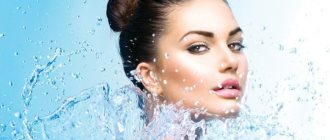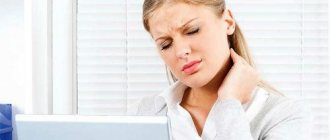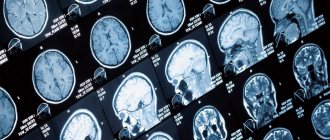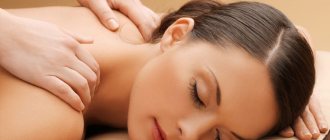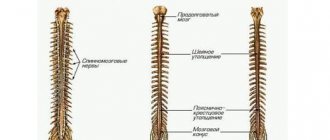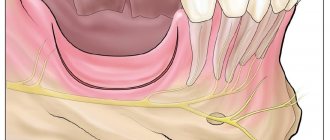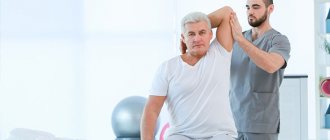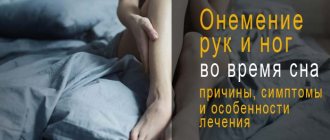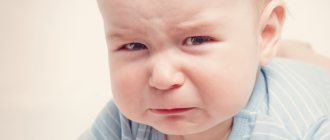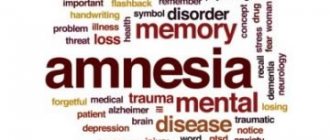Home » Useful » 7 types of reflexology - what it is and what it treats, cost and reviews
Author of the article
Agata Kozhukhova
Reading time: 9 minutes
AA
Modern medical methods involve the use of different means . Along with herbal medicine, reflexology, which originated in ancient China . How effective is the reflexology method?
Reflexology concept
This is a set of measures aimed at influencing the use of body points. By clicking on the desired point, the functionality of the diseased organ is restored. By influencing biologically active points, organs are stimulated with impulses . The impulses transmit a signal to the brain, after which the functioning processes in the affected organ are launched.
The organism, the human body, is a single biological system. If one of the functions is disrupted, the entire system suffers . During the research, points were found that, when acted upon, can quickly bring the body back to normal.
Distinctive properties of points:
- have increased sensitivity when exposed to pressure or electric current;
- the process of oxygen absorption increases;
- the process of micro-circulation of blood and lymph becomes active .
Despite the fact that the method is unconventional, it is recognized by official medicine. Acupuncture, the use of metal balls, warm stones, and laser beams are widely used.
Note! Reflexology can be prescribed as an independent method of therapy, or in combination with prescribed medications.
Current state of reflexology
Macheret E.L., Kovalenko O.E., Chupryna G.N., National Medical Academy of Postgraduate Education named after P.L. Shupika, Kyiv
Summary
The article characterizes the essence of the reflexology method, describes in detail its modern scientific foundations, and provides an analysis of the state of the reflexology service in Ukraine, its achievements and development prospects.
Keywords
Reflexology, achievements, prospects.
Currently, the method of oriental reflexology (RT) is being actively studied and developed, in which representatives of various specialties (doctors, physiologists, biochemists, morphologists, engineers, biologists, physicists) take part. The urgency of the problem and the need for modern scientific study of it are reflected in the corresponding decision of the WHO (1980).
Modern medicine has achieved great success, but the ever-deepening differentiation of medical specialties, the technicalization and depsychologization of medicine, the threat of increasing intolerance to most synthetic drugs puts great obstacles in the way of healing and forces us to look for some way out of a difficult situation. This encourages us to look back and look for opportunities that have not yet been realized. And involuntarily the gaze turns to the East.
One of these factors that can significantly increase the body’s nonspecific resistance is reflexology. Its feature is the ability to specifically influence the immunobiological protective properties of the body, both local and general, thereby increasing its adaptive capabilities.
At the same time, there is an increase in the reactivity of the main functional systems, their adaptation-trophic role, as well as activation of the main metabolic processes, which are the main factors contributing to the manifestation of the therapeutic effect due to the activation of the immune system. This is confirmed not only by the history of the method, which dates back thousands of years, but also by modern experience and the latest scientific developments, both ours and the East, in particular China.
Reflexology is a broad concept that includes many methods that differ in the quality of irritants to acupuncture points. The classic and oldest is acupuncture (acupuncture), when the irritant of the points is a special needle, and acupressure has long been known. With the development of modern science and technology, the methods of electropuncture, laser puncture, cryopuncture, thermopuncture, EHF puncture and others have become widespread.
Reflexology methods have many advantages: no side effects, including allergies, relatively quick positive effects and virtually no contraindications.
The RT method was most widely used in the USSR in Ukraine. If before 1977 there were only 50 people here who knew acupuncture methods, then since 1977, the first in Ukraine to begin developing reflexology were employees of the Department of Neurology No. 1 of the Kyiv Institute for Advanced Medical Studies, headed by Professor E.L. Macheret, where the training of reflexology specialists for doctors of all medical specialties was systematically carried out. So, in 1978, a reflexology service was created and chief reflexotherapists were appointed in all regional centers, as well as in Kiev and Sevastopol, and prof. E.L. Macheret was appointed chief freelance RT specialist of the Ministry of Health of Ukraine.
In the second half of the 20th century, RT methods received great recognition throughout the world both among doctors and patients. Over the past 30 years in Ukraine, they have remained the subject of particularly active scientific research and practical application.
Recognition of the practical value of RT was the introduction of the 24th medical specialty “reflexotherapy” of the Ministry of Health of Ukraine in 1993. Research work and training of medical personnel in RT are carried out at the Kyiv Medical Academy of Postgraduate Education named after. P.L. Shupik, at the Ukrainian organizational, methodological and scientific center of reflexology of the Ministry of Health of Ukraine on the basis of the National Medical Academy of Postgraduate Education named after. P.L. Shupik, at the Kiev Medical Institute of the Ukrainian Academy of Medical Sciences, at the Ukrainian Academy of Oriental Medicine and Culture, at the leading regional medical institutions of Ukraine - in Kharkov, Dnepropetrovsk, Lvov.
As for the issue of training medical doctors in reflexology, from 1996 to the present, they have been developed by employees of the NMAPE named after. P.L. Shupik new programs, approved by the Ministry of Health of Ukraine, for a 3-month specialization cycle and a 1-month cycle for thematic improvement and a pre-certification cycle, as well as a 1-month cycle for improvement in reflexology for teachers, because The Department of Neurology and Reflexology of NMAPE is a supporting department in Ukraine.
It should be noted that thanks to such planned training in reflexology, the level of knowledge has significantly increased due to the fact that without completing a specialization cycle (after which the doctor receives a “certificate as a reflexologist”), the doctor does not have the right to practice RT methods; Without completing a cycle of thematic improvement in RT and a pre-certification cycle, he has no right to receive the appropriate medical category in this specialty.
Certification of a doctor in reflexology is carried out in all regional and city health authorities, as well as in the Ministry of Health of Ukraine (regularly every 2 months).
Currently, there has been a significant increase in the share of the use of reflexology methods for various nosological units; Thus, pain syndromes of vertebrogenic origin occupy 40%, diseases of the cardiovascular system - 35%, joint diseases - 23% and respiratory diseases - 12%. In addition, the scope of application of reflexology methods in the treatment of cardiovascular pathology continues to expand, namely stage 1–2 hypertension, dyscirculatory encephalopathy of various origins, coronary heart disease and angina pectoris.
Despite the above, out of 17 thousand trained specialists, many remain unclaimed, because they are replaced by doctors who do not have special training in reflexology, i.e. This group of doctors does not have a “reflexologist certificate”, because Often among doctors involved in rehabilitation issues and physiotherapists there is an illegal substitution of terms - “physiopuncture” instead of “acupuncture”.
All of the above allows us to draw the following conclusion: in order to increase the effectiveness of the therapeutic effect when using reflexotherapy methods, including laser puncture, to improve the health of the people of Ukraine and thereby preserve a healthy gene pool, it is necessary to strictly comply with the requirements of the Ministry of Health of Ukraine to prohibit the use of reflexotherapy methods without a “certificate of a reflexologist”, regardless of medical specialty, including physical therapy.
Improving existing and developing new means and methods of prevention are one of the most important problems in medicine. Rational prevention is based primarily on increasing mobilization readiness and the effect of the protective adaptive mechanisms of the human body. As mass practical measures, methods for increasing adaptive capabilities should be widely used, ensuring an increase in nonspecific or cross-resistance, which means the body’s ability to withstand the effects of unfavorable factors of the external and internal environment by maintaining the functions of individual systems and maintaining dynamic regulated relationships between them. Nonspecific prevention should be combined with specific, i.e. with increased resistance to a specific most likely pathogenic factor. Most preventive measures are aimed at solving one part of this two-pronged task of prevention. The optimal solution is the possibility of combining an increase in general nonspecific resistance with an impact on those organs, systems and functions of the body that experience the greatest load due to the influence of a particular pathogenic factor.
To a certain extent, such opportunities are provided by reflexology, used to increase adaptive abilities (reflexoadaptation) and for preventive purposes (reflexoprophylaxis).
Reflexoprophylaxis is the use of reflexotherapy methods in a healthy person to increase the effectiveness of his protective adaptive mechanisms.
We can, in particular, talk about secondary prevention of chronic diseases. The theoretical basis of reflex adaptation and reflex prevention is the modern doctrine of stress and adaptation, which organically combines the domestic direction of primacy and G. Selye’s hormonal and humoral therapy. Acupuncture and other methods of therapeutic reflex effects are considered to be forceful stress-generating stimuli that cause the development of a general adaptation syndrome with the mobilization of nonspecific protective-adaptive reactions. At the same time, the local nature of the pathogenic stimulus, taking into account the principle of somatotopic organization of somatovisceral interactions, provides the possibility of selective application of the functional state of the neurons of the central nervous system, on which efferent signals from the surface of the body and internal organs converge. An adaptogenic set of acupuncture points allows you to simultaneously selectively regulate the function of organs and systems based on the principle of segmental and autonomic innervation. These features of reflexology methods ensure the development of combined specific and nonspecific - therapeutic and prophylactic effects.
A generalization of our own results and analysis of literature data allows us to believe that RT methods can be successfully used not only to correct pathological changes in the body, but also to manage the functional states of healthy individuals.
The possibility of targeted impact on physical, immune and psycho-emotional functions provides a pronounced adaptogenic and preventive effect of reflex effects under increased physical and psycho-emotional stress, physical inactivity and the action of a number of other stress factors that can provoke the development of many widespread diseases.
The main advantages of reflex adaptation and reflex prophylaxis compared to other autogenous and prophylactic agents are physiological, cost-effective, minimal number of contraindications and low likelihood of side effects. Adaptogenic and preventive effects of influence on reflexogenic zones are based solely on the mobilization of the body’s own functional reserves, their more complete and adequate use.
Reflex adaptation and reflex prophylaxis can be attributed to people as independent methods, or in combination with other adaptogenic and preventive means. Further development and widespread introduction of reflex adaptation and reflex prophylaxis contribute to the mass improvement of the population and increase the duration of their working life.
The unification of educational programs is of great importance for the development of the Republic of Tatarstan. The first such program was created by a group of experts under the leadership of the Central Institute for Advanced Medical Studies (Moscow) in 1978, which was revised and supplemented in 1985.
The development of RT in Ukraine formally began with the Order of the Ministry of Health of the USSR No. 266 of March 17, 1976 on the opening of the RT course at the Department of Neurology No. 1 of the Kiev Institute for Advanced Medical Studies (head of the department Prof. D.I. Panchenko, head of the reflexology course Prof. E.L. Macheret).
At the same department (now the Department of Neurology and Reflexology of the P.L. Shupik National Medical Academy of Postgraduate Education) under the leadership of Professor E.L. Macheret in 1977 began training courses for doctors in this specialty, thanks to which more than 17 thousand specialists were trained, including foreign doctors, and not only from European countries, but also from the countries of the East (China, Vietnam, Syria, India and etc.). In addition to the Department of Neurology and Reflexology, NMAPE named after. P.L. Shupik reflexology is taught at the Kharkov Academy of Postgraduate Education (KMAPO), Lviv National Medical University. Danil Galitsky, Crimean State Medical University named after. Georgievsky, at the Kiev Medical Institute of the Ukrainian Academy of Medical Sciences.
In 1988, at the Donetsk Medical University, for the first time in Europe, specialization and improvement in pediatric reflexology was organized (Prof. S.K. Evtushenko).
In 1980, an RT service was created, a network of laser reflexology rooms was opened, and a large number of methods for treating and diagnosing various diseases using RT methods were developed. To support local work in all regions of Ukraine and the Autonomous Republic of Crimea, as well as the cities of Kyiv and Sevastopol, chief specialists have been appointed, whose work is coordinated by the chief specialist of the Ministry of Health of Ukraine for the Republic of Tatarstan, corresponding member of the Academy of Medical Sciences of Ukraine, prof. E.L. Macheret.
Since 1979, scientific experimental and clinical studies of the mechanisms of action of needle and laser reflexotherapy began, which were reflected in more than 1,700 scientific papers in leading journals both in our country and abroad (in Europe, the USA and China), 18 monographs were published , 15 textbooks, over 50 methodological recommendations, 31 copyright certificates and patents.
In connection with the successful spread of RT in the country and in support of the method, a number of orders of the Ministry of Health of Ukraine have been issued. For example, on June 9, 1993, Order No. 130 of the Ministry of Health of Ukraine was issued on the approval of the 24th medical specialty - reflexology, and on December 29, 1994, Order No. 318 of the Ministry of Health of Ukraine “On the improvement of reflexology service in Ukraine” was issued, in which the regulation on the reflexology room was approved and laser therapy, regulations on the doctor’s office, on the organization of reflexology laser therapy rooms in regional and city hospitals, as well as central and district clinics, the workload of the reflexologist is determined.
All these measures strengthened the legal basis for the development of reflexology in Ukraine. In connection with growing demands, a new draft order has been developed this year, which takes into account current issues of reflexology that have emerged in recent years.
History of appearance
There is no exact data on the time of occurrence. The origins of acupuncture go back to antiquity . Back then, needles were used as healing methods. To get rid of pain, a person instinctively tries to press on the point . Thus, points that could be influenced gradually began to be identified.
Archaeological excavations indicate that stone, bone and bamboo needles were used in ancient times.
The birthplace of reflexology is China . In Europe, the method began to be used only in the 17th century. On the territory of the USSR, acupuncture was recognized in 1957 during the exchange of experience with Chinese doctors. Acupuncture originated in Tibet. Then it began to be used in Nepal and India. From Japan and China, the method quickly spread to the countries of the East - Mongolia, Korea.
A new stage in the development of the technique began in 1949. They began to study the technique in more depth and develop a scientific basis for the actions of doctors.
Now there are a huge number of monographs on the topic, even two research institutes have been created - the “Institute of Pain Control”, the second in Tokyo.
The method came to Europe in the 17th century , and was spread by missionaries. In 1978, a unified reflexology program was created for advanced training institutes for doctors. In the 90s, acupuncture experienced a heyday, and since 1998, the specialty of a reflexologist has been included in the register of medical specialties.
Achilles tendinopathy
Causes of tendinopathy | Risk groups | Signs | How to treat
Achilles tendinopathy is a disease that makes simple movements difficult: walking, running, climbing stairs. All that is required of the patient is to promptly contact a specialist at the first symptoms. Tendinitis can only be effectively treated under the supervision of a doctor. Orthopedists and neurologists at Doctor Ost MC eliminate not only the symptoms, but also the cause of tendinopathy.
Sign up
The Achilles tendon, which connects the lower leg and foot, is very strong and reliable. But just as water wears away a stone, daily heavy loads on the Achilles gradually destroy it. Achilles tendinopathy is one of the common ailments. The discomfort in the heel can be so severe that it becomes impossible to walk. You should not endure this pain - tendinopathy is treated using effective techniques.
Doctor Ost MC does not waste time on symptomatic treatment of tendinopathy. It is known: in order to get rid of pain, you need to look for and eliminate its cause. This is not difficult if the clinic is well equipped and does not use modern treatment methods. These are the conditions created at the Doctor Ost MC.
CAUSES OF TENDINOPATHY
The Achilles tendon is a dense bundle of collagen fibers. With regular exercise, the fibers do not receive sufficient nutrition and begin to break down. The more damaged fibers, the greater the discomfort. If the patient makes no attempt to stop the process, acute tendinopathy becomes chronic. In this condition, even a minor injury is dangerous: the already damaged tendon can rupture.
To prevent the condition from becoming critical, tendonitis must be treated on time, immediately after the first symptoms appear. Treatment will be quick and truly effective if you entrust it to a neurologist or orthopedist at Doctor Ost MC and do not self-medicate.
ACHILLES TENDINOPATHY: GROUPS AT RISK
Achilles tendinopathy is an inflammatory process that occurs in response to excessive stress. Most often they suffer from:
- Women who prefer high-heeled shoes;
- Athletes (especially track and field athletes);
- Patients with systemic connective tissue diseases or hormonal insufficiency;
- Patients with flat feet and pathologies of the structure of the lower extremities.
Tendinopathy can also occur due to a sudden injury: for example, after an unsuccessful fall. But more often this disease is not accidental and is associated with serious stress on the Achilles.
Ask a Question
SIGNS OF TENDINOPATHY
The tendons that connect the tibia and heel bone provide the ability to jump, run, and rise on the tiptoes. We make these movements every day. Therefore, even a slight inflammation is felt immediately. Symptoms of Achilles tendinopathy:
- Pain along the back of the lower leg closer to the heel bone during movement. Passes at rest;
- Decreased foot mobility;
- Swelling over the Achilles injury;
- Redness, local increase in temperature over the injured area.
In the chronic form of tendinopathy, the pain becomes constant, bothers you even without load, a crunching sensation is felt with any movement (calm walking, climbing stairs), and a noticeable mass formation appears above the Achilles.
HOW TO TREAT ACHILLES TENDINOPATHY
As soon as pain in the heels and legs begins to seriously bother you, you should immediately contact a specialist! You should not expect that the discomfort will go away and the fibers in the Achilles tendons will recover on their own. What is most likely to happen with acute tendinopathy is that it will become chronic and will regularly remind itself, reducing the quality of life. Don't risk your health and don't wait for a tendon to rupture! It is always easier and faster to cure diseases of the musculoskeletal system in the initial stages!
At Doctor Ost MC you can get rid of pain from Achilles tendonitis in one visit. The therapy does not require much time; basic treatment can be done at home. Even in advanced cases, treatment of tendinopathy will not require hospitalization if performed using the unique methods of the Doctor Ost MC.
how much does it cost? Achilles tendinopathy is treated by a neurologist and an orthopedic traumatologist.
The cost of consulting a specialist is indicated in the “consultative appointment” section of our price list. Follow the promotions, don't miss out on the best price! What our center’s specialists can do when treating tendinopathy:
- Relieve tendon inflammation with high-intensity HILT laser;
- Start the process of restoring collagen fibers with alloplant injections or PRP therapy;
To prevent tendinopathy from returning, the orthopedist at Doctor Ost MC will help correct flat feet, create an individual exercise therapy complex, and refer you for massage or taping.
Types of reflexology
When using different methods of reflexology, you can slow down or speed up the movement of energy that is in the affected organ. When choosing a method, pay attention to which organ is damaged and how deep the damage is.
Types of reflexology:
| Types of treatment | Description |
| acupuncture | An effective technique that directly depends on the angle at which the needle is inserted. Has a calming, tonic effect. Small needles can be left in the skin for several days |
| auriculotherapy | Acupressure of active points of the auricle. There are more than 250 points on the sink. Normally, they are painless; pressing on the points may cause pain. If there is a chronic disease, then diaper rash and pain appear at the active point. |
| acupressure | Mechanical impact on the points using a finger or special medical instruments. The integrity of the skin is not compromised. |
| thermopuncture | Use of heat. Wormwood cigars are used for this purpose. |
| electropuncture | Application of electric current |
| microcurrent | Used as an independent method. Often used to treat children with cerebral palsy. |
| magnetopuncture | Exposure to magnetic field. Relieves pain in chronic diseases |
Note! The method is prescribed by a specialist after studying the patient’s medical record. The patient cannot independently choose the direction of treatment.
The concept of reflexology and the history of its origin
Reflexology therapy (reflexology) is an ancient teaching that allows you to exert a physical influence on specific areas of our body (reflexogenic points or acupuncture points). As a result of such stimulation, an impulse appears that enters certain nerve centers, after which they send this signal to the painful organ, thus creating an impetus to launch the body’s self-healing system.
This science includes a whole complex of various techniques that are based on non-medicinal, but mainly physical methods of influencing the corresponding parts of the body in order to cure various diseases.
This technique first appeared in China. The earliest information about it dates back to the fifth century BC. Even in those ancient times, people noticed that by acting in different ways on the affected areas of the body (burns, open wounds, bruises), one can significantly improve a person’s well-being, and sometimes even completely cure him of the disease.
This is how a whole healing system was formed, which later received the name reflexology. This teaching has absorbed the centuries-old experience of Eastern doctors and today has become widespread and worldwide recognized.
It should be noted that in European countries this practice found its application back in the seventeenth century of our era. But its rapid development began at the beginning of the twentieth century, when the American doctor Fitzgerald discovered that if you press on specific areas of the body during a massage, you can reduce or eliminate pain, as well as improve the functioning of internal organs. He published his findings, describing in general terms the concept of the interconnection of different parts of the body.
Basics of therapy and the main condition for the effectiveness of reflex treatment
The basis of the judgments promulgated by Fitzgerald is the idea of the human body as an integral interconnected system, which means that a failure in one part entails a disruption in the functioning of another. Of great importance here is the energy structure of the human body, which consists of a combination of different energy systems.
During a reflexology session, the doctor selectively influences the reflex areas through which several energy systems run, selecting the pressure force, the angle of influence, and the duration of treatment. These energy systems interact with each other according to certain rules that determine the required paths of treatment and regeneration of the body.
Thus, various types of influence on bioactive currents make it possible to coordinate the functions of internal organs through influence on the surface of the body, activating their work or, conversely, inhibiting hyperactivity.
Therefore, the main secret of the effectiveness of such treatment lies in the correct identification of bioactive points, the order of their stimulation, as well as the method of influence.
Indications and contraindications for use
Despite all the positive aspects, there are a number of contraindications that are worth paying attention to. It is prohibited to use:
- oncological diseases, benign tumors;
- mental instability;
- pregnancy;
- infectious and inflammatory diseases;
- tuberculosis , its open form.
Note!
The main contraindication is intolerance to substances that are administered when using the techniques. The doctor makes appointments taking into account medical procedures that may put the body at risk. It is prohibited to use the technique if a strip operation was performed.
Among the positive effects are:
- relieving pain;
- restore joint mobility;
- normalize sleep;
- restore metabolic processes;
- stabilize the state of the vegetative-vascular system.
Many patients experience positive dynamics only if complex treatment is prescribed.
See photo gallery:
To the point: who is suitable for reflexology?
Since reflexology works with the entire body and establishes a balance between its systems (immune, nervous, endocrine, neuro-peptide, etc.), there are many indications for using the method. Let us highlight those where reflexology is most effective.
- Diseases of the nervous system. Neuroses, neuralgia, enuresis, dizziness of unknown origin, nervous tics.
- Diseases of the musculoskeletal system. Here reflexology is used as a non-drug method of pain reduction. It is suitable for diseases such as osteoporosis, osteochondrosis, arthritis, arthrosis, myositis. By the way, we have already talked about how to treat joints.
- Diseases of the gastrointestinal tract. Ulcers, gastritis, constipation, nausea.
- Respiratory diseases. Laryngitis, pneumonia (not in the acute stage).
- Diseases of the cardiovascular system.
- Gynecological diseases. Pathologies caused by hormonal imbalance (ovarian dysfunction, cycle disorders, infertility).
Contraindications to reflexology
- Oncology.
- Systemic blood diseases.
- Infectious diseases: purulent-inflammatory processes, hepatitis, tuberculosis, etc.
- Pregnancy.
- Venereal diseases.
- States of intoxication of the body.
- HIV infection.
Negative consequences
Before making appointments, you should find out the patient’s tendency to allergic reactions and check their health status .
Common negative effects are:
- the appearance of a headache ;
- the appearance of pallor on the skin;
- the appearance of tingling in the area where needles were previously installed;
- nausea;
- weakness;
- the appearance of hematomas after the manipulations.
Reflexotherapy treats diseases of varying severity , providing a prolonged effect. It is used after chemotherapy and can be used in patients of any age.
You can undergo reflexology treatment programs at the sanatoriums of the Ministry of Defense:
- Sanatorium “Divnomorskoye”
- Sanatorium “Solnechnogorsk”
- Sanatorium “Slobodka”
- Sanatorium “Cote d'Azur”
- Sanatorium “Gold Coast”
- Sanatorium “Borovoe”
- Sanatorium “Molokovsky”
Main indications for reflexology
Diseases (syndromes) of the nervous system and sensory organs:
- Diseases of the autonomic nervous system: idiopathic peripheral autonomic neuropathy (sympathoganglionitis, etc.).
- Atypical facial pain.
- Diseases of the facial and trigeminal nerves, diseases of other cranial nerves.
- Diseases of nerve roots and plexuses, phantom limb syndrome.
- Mononeuritis of the extremities and multiple neuritis, neuropathies.
- Migraine.
Mental disorders: - Neurotic disorders: anxiety neurosis (anxiety), neurotic phobias, hysterical neurosis, obsessional neurosis, neurotic depression, neurasthenia, hypochondriacal neurosis, neurotic headaches.
- Frigidity and impotence.
- Chronic alcoholism, substance abuse, smoking.
- Violation of physiological functions of psychogenic etiology (psychogenic torticollis, etc.).
- Tics, enuresis.
Diseases of the eye and its appendages: - Chronic conjunctivitis, blepharoconjunctivitis and blepharitis (allergic).
- Impairments of refraction and accommodation (moderate).
- Optic neuritis (with moderate vision loss).
Diseases (syndromes) of the ear and mastoid process: - Meniere's disease.
- Ringing in the ears, diseases of the auditory nerve, otalgia.
Diseases of the circulatory system: - Essential hypertension, hypertension (stages I and II).
- Chronic ischemic heart disease (without pronounced changes on the ECG).
- Atherosclerosis (early stages).
- Raynaud's syndrome (disease).
- Varicose veins, trophic ulcers.
- Hemorrhoids (external and internal).
- Hypotension.
Diseases of the endocrine system, metabolic disorders: - Thyrotoxicosis (moderate).
- Ovarian and testicular dysfunction (moderate).
Respiratory diseases: - Chronic rhinitis, pharyngitis, tonsillitis, allergic rhinitis, chronic laryngotracheitis.
- Chronic bronchitis, bronchial asthma.
Diseases (syndromes) of the digestive system: - Chronic gingivitis, periodontal disease, stomatitis, glossodynia, glossalgia.
- Peptic ulcer of the stomach and duodenum.
- Gastritis and duodenitis, gastroenteritis and colitis of non-infectious etiology.
- Dyspepsia and other functional stomach disorders.
- Constipation.
- Chronic noncalculous cholecystitis, biliary dyskinesia. [CUT] Diseases (syndromes) of the genitourinary system:
- Chronic cystitis, cystalgia.
- Vaginitis and vulvitis, cervicitis and endocervicitis.
- Menstrual irregularities, uterine bleeding, menopausal syndrome.
Childbirth and postpartum period: - Regulation of labor and pain relief during labor.
- Lactation disorders.
Diseases (syndromes) of the skin and subcutaneous tissue: - Seborrheic dermatitis, eczema, neurodermatitis.
- Psoriasis.
- Itching and related conditions.
- Urticaria, angioedema.
Diseases (syndromes) of the musculoskeletal system and connective tissue: - Rheumatoid arthritis (with impaired joint function of stages I-II).
- Traumatic arthropathy, chronic post-traumatic arthropathy.
- Deforming osteoarthritis and related disorders.
- Allergic arthritis.
- Diseases of the intervertebral discs (with various neurological disorders - radicular syndromes) - cervical, thoracic, lumbosacral radiculitis, sciatica, lumbago.
Cost of the procedure
The cost depends on which method was prescribed to the patient.
- acupuncture – 950-2000 rub. At least 10 sessions are required ;
- use of an electrical impulse – 2000 rub. ;
- acupuncture for weight loss 500 -2000 rub. ;
- for infertility – 1300 – 2100 rubles. ;
- from smoking – 1000 rub.
Note! The price is indicated for one visit. Minimum quantity of 5 or more.t
Reflex therapy methods
Depending on the form and severity of a particular disease, various methods of reflex treatment are used.
- Acupuncture. Otherwise, this method is called acupuncture, since it is based on the introduction of steel, gold or silver needles into acupuncture points of the body. In most cases, this procedure does not cause pain and helps achieve a calming or tonic effect (this depends on the method of needle penetration).
- Electroacupuncture is stimulation of acupuncture points with electric current. It can be used to eliminate pain or as an autonomous way to influence points.
- Thermopuncture - influencing reflexogenic points using heat. This method is also called cauterization, since most often it involves the use of wormwood cigars.
- Injection therapy or pharmacopuncture. Involves administering medications to points of impact. This method gives positive results in the fight against excess weight, promotes rapid pain relief and muscle relaxation, and improves overall blood circulation.
- Magnetopuncture – stimulation of reflexogenic points using an alternating or constant magnetic field. This method is productive in relieving pain, eliminating the negative effects of stress and for prevention purposes.
- Vacuum reflexology (cupping). Treatment is carried out by performing a special massage using special cups.
- Apyreflexotherapy – stimulation of different parts of the body with bee stings.
- Phonopuncture - this principle is based on the directed action of ultrasound on acupuncture points.
- Heliopuncture is infrared irradiation of biologically active zones.
There are other internationally recognized methods of reflexology, but perhaps the most popular and effective today is acupuncture.
Benefits of treatment
The benefits are obvious. It can be prescribed both for ordinary ailments and for serious diseases - back, migraine, premenstrual syndrome.
It also helps determine the presence of an impending disease. Once the danger is determined, the required number of sessions is prescribed.
If treatment is carried out regularly, the patient can maintain his health.
Note! The techniques can be used at home, but only to achieve a relaxing effect.
